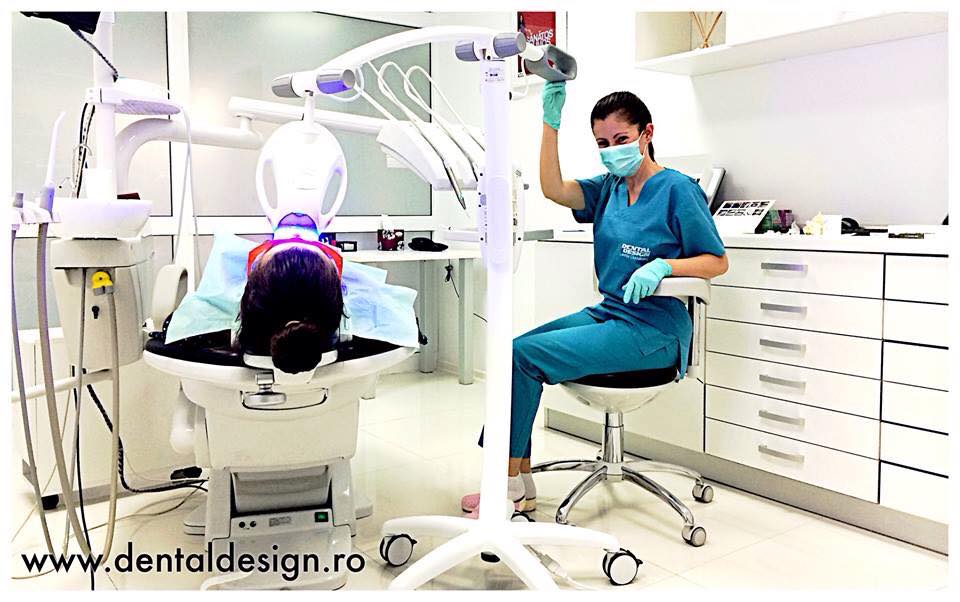Let’s talk about keeping our teeth clean and healthy! Who doesn’t like a beautiful smile? Oral hygiene is of two types: professional oral hygiene and personal oral hygiene.
The personal oral hygiene
Oral hygiene is the practice of keeping the mouth clean and healthy by brushing and flossing to prevent tooth decay and gum disease. Brushing should be performed 3 minutes with a soft-bristled toothbrush and toothpaste at least twice a day and preferably after every meal and snack.
Today there is a wide variety of toothpaste designed for many conditions, including cavities, gingivitis, tartar, stained teeth and sensitivity; however they do not have the most important role in tooth brushing ,but brushing frequency, duration and correct procedure. A toothpaste will be chosen by the need and preferences of taste, color or odor of each.
To clean the outer surfaces of 2-3 teeth, the brush should be held at a 45° angle from the teeth describing a rotating motion,vibration and a movement from the gum to the tooth crown 5 times each group. Then reposition the brush for the next 2-3 teeth and repeat the movement. Keeping the 45° angle from the contact surface of the teeth and toothbrush, brush the inner surface of the teeh easily, all in circular motion from the back to the front. To clean the inside surfaces of the front teeth, the toothbrush should be held vertically and brush in same way but with the bristles at the tip (called the toe of the brush). To clean the chewing surfaces of the large back teeth, the brush should be held flat and moved back and forth. Finally, the tongue should also be brushed using a back-to-front sweeping motion to remove food particles and bacteria that may sour the breath. Always rinse your toothbrush with water after brushing. Store your toothbrush in an upright position, if possible, and allow it to air dry until using it again. Don’t routinely cover toothbrushes or store them in closed containers, which can encourage the growth of bacteria. Toothbrushes wear out and should be replaced at least every three months. It is adviseable to look for tooth- brushes with soft, nylon, rounded bristles in a size and shape that allows them to reach all tooth surfaces easily.
An interdental brush, also called an interproximal brush or a proxy brush, is a small brush, typically disposable, either supplied with a reusable angled plastic handle or an integral handle, used for cleaning between teeth, under bridges and between the wire of dental braces and the teeth. Brushes are available in a range of widths, color coded but you must choose a size adequate space not to damage the gums. Let the dentist recommend one if needed. The correct movements are back and forward for in-between teeth and dental braces and teeth and left-right for under the bridges.
You can’t reach the tight spaces between your teeth or under your gumline with a toothbrush. That’s why daily flossing is important. When you floss: Break off about 18 inches (46 centimeters) of dental floss. Wind most of the floss around the middle finger on one hand, and the rest around the middle finger on the other hand — leaving about 3 centimeters to floss your first tooth. The floss is eased between two teeth and worked gently up and down several times with a rubbing motion. At the gumline, the floss is curved first around one tooth and then the other with gentle sliding into the space between the tooth and gum. Flossing proceeds between all teeth and behindthe last teeth. If you have trouble getting floss through your teeth, try the waxed variety. If it’s hard to manipulate the floss, use a floss holder or an interdental cleaner — such as a dental pick or stick designed to clean between the teeth.
Superfloss is a orthodontic floss that provides a solution for cleaning between braces, bridges and wide gaps. Its three unique components — a stiffened-end dental floss threader, spongy floss and regular floss—all work together for maximum benefits.
Most scientific research indicates that simple cleaning and flossing is not enough for most people with bridges and implants or during orthodontic treatment to keep their teeth healthy. The mouth irrigator supports daily cleaning of teeth while removing residues of food and plague from the most difficult to reach parts of the mouth; in-between teeth; and under bridges, prostheses, and around implants. Toothbrushes are not able to reach such places, and saliva does not wash them efficiently enough. In order to keep optimal oral hygiene, mouth irrigator usage is recommended. It washes out residues and bacteria, and destroys bacteria-friendly environments.
Professional Oral Hygiene
Professional oral hygiene involves hygienic procedures during which mineralised and non-mineralised plaque is removed,surfaces of the teeth and fillings are polished,therapeutic preparations(fluorine) are applied,pacients are taught how to performe personal oral hygiene,the evaluation of efficency of personal oral cleaning is performed.We also investigate the mucous membranes and thus can detect any early abnormality(including oral cancer).
The major cause of dental diseases (decay,periodontitis) is dental plaque and bacteria in it. Soft plaque is easily removed using corect personal oral hygiene such as brushing, flossing and mouth rinse. If soft plaque it is not cleaned 1-3 days later it starts to mineralise and soft plaque turns into hard plaque-dental tartar- in 10-20 days. Dental tartar precipitates in places where salivary gland ducts open,for example on lingual surfaces of lower anterior teeth,on upper molar teeth, also in case of dental malposition. Dental tartar can be located supragingival or subgingival.
The hygienic procedures in professional oral hygiene are: scaling, brushing and polishing and air flow.
Scaling is a preventive dental procedure that removes hard plaque (dental tartar)using a ultrasound device and special manual instruments. Once tartar is cleaned, the teeth are polished and brushed. After the ultrasonic scaling gums can be irritated and there may be some bleeding for several days but they will return to the normal condition in 2 weeks. What you need to know is that ultrasonic scaling is not damaging the enamel because he only acts on deposits of tartar. During ultrasonic scaling there may be a slight painful sensation caused mainly by exposing dental roots by already withdrawn gums. This sensitivity can persist for several days to a week,being triggered by cold or sweet foods but it dissapeares immediately after the cessation of their action.
Pigmentary plaque (caused by smoking,coffee,tea and other dying materials) is removed using a special sandblaster . Even those areas which are extremely hard to access are easily cleaned by water,sodium and air particles ejected by a sandblaster (air flow). If patient has some aesthetically restored teeth they have to be polished in order to renew surface gloss.
Brushing is performed after the ultrasonic scaling and has a polishing and smoothing role for dental surfaces. The teeth are polished with rotating rubber heads and brushes using a special kind of toothpaste,a proffesional toothpaste with high or medium grit depending on the stains on the teeth. Then using abrasive strips and dental floss are cleaned the spaces between the teeth.
The professional oral hygiene is recommended every 6 months. For patients with fixed bridges and implants it is advised every 4 months and for the smokers and pacients with periodontal problems this procedure is recommended every 3 months. Indications will be given by the doctor or dental hygienist.
And don’t forget: You only have to clean the teeth you want to keep! 🙂
Bogdan Fondrea & Denisa Sava – www.dentaldesignclinic.co.uk





